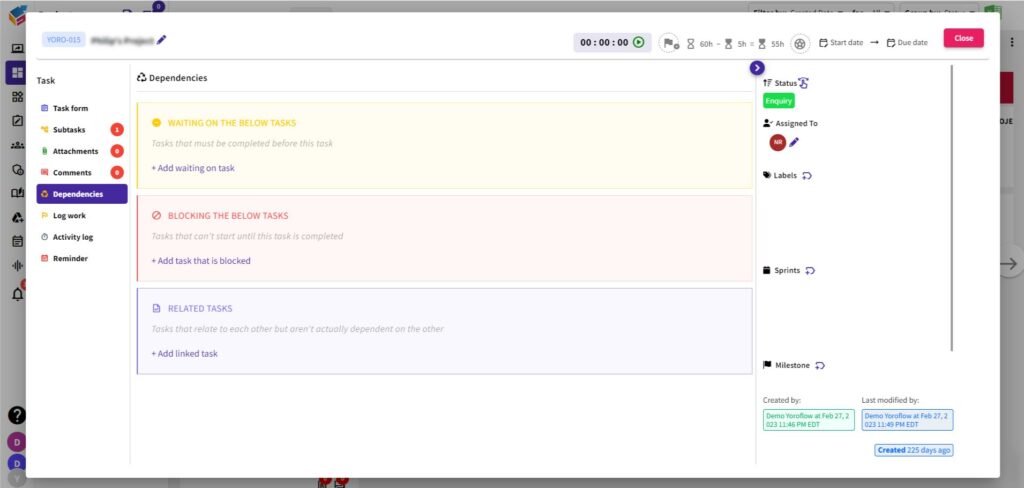Table of Contents
The word “dependencies” is often used in project management when discussing the relationships that resources have with one another, which require them to be started at an earlier point than other resources on a project. When identifying those task dependencies, it’s essential to know the difference between resource-based and schedule-based dependencies. Read on to learn more!
Dependencies in Project Management
A project management dependency report can tell you in real-time.
Whether or not the tasks in your project are on track to be completed, who’s been assigned what tasks, and the latest deadline date for those tasks.
It can give you insight into where your projects are and which areas of your project might pose an issue.
Introduction
Project management dependencies refer to the relationship between different elements in a project. In other words, it’s how one project element depends on another.
Dependencies can be either internal or external. Internal dependencies are those that exist within the project team, while external dependencies are those that exist outside of the team.
Finally, dependencies can also be classified as either soft or hard. Soft dependencies are based on relationships and agreements that can change over time, while complex dependencies are based on contracts or other legal agreements that cannot be easily changed.
This guide will explain all you need to know about managing project dependencies.
What Is a Dependency?
In project management, a dependency is a link between two or more activities. In other words, it is an activity that must be completed before another activity can begin.
There are three types of dependencies:
- External dependencies are outside the project team’s control and must be coordinated with other entities. Examples include holidays, weather, and the availability of resources from suppliers.
- Internal dependencies are within the project team’s control and do not require coordination with other entities. Examples include tasks that can only be completed after other tasks or tasks that specific team members can only complete.
- Dependencies can also be classified as technical or managerial. Technical dependencies involve the completion of specific deliverables before others can begin. Managerial dependencies involve the approval or sign-off from specific individuals before work can proceed.
How To Use Dependencies?
Use dependencies based on the following:
- Precedence dependencies
- Resource dependencies
- Finish-to-start dependencies
- Start-to-start dependencies
Precedence dependencies are the most common type of dependency. They indicate that one task must be completed before another task can begin. For example, if you are painting a room, you must finish preparing the walls before you can start painting them.
Resource dependencies occur when two tasks require the same resources to be completed. For example, if two tasks both require the use of a particular machine, then they have a resource dependency.
In this case, the order in which the tasks are completed is not essential, as long as the machine is available when needed.
Finish-to-start dependencies occur when completing one task is necessary for another task to begin. For example, if you are writing a report, you must finish researching before starting writing.
Real-Time Examples
As a project manager, you will inevitably have to deal with dependencies. In this blog post, we’ll look at some real-world examples of dependencies and how to manage them effectively.

One common type of dependency is when two tasks are sequential, meaning that the second task can’t start until the first task is complete. For example, you can’t install new software until the old software is uninstalled. In this case, it’s essential to communicate the dependency to all stakeholders to understand why the second task is taking longer than expected.
Another common type of dependency is when two tasks are parallel, meaning they can be worked on simultaneously. An example of this would be if you’re working on a website redesign and must ensure that the new design is compatible with all the existing content.
Suppose you follow these steps carefully, lay out a blueprint for each task, and work with your client or business owner to create realistic end goals for success. In that case, you’ll have an excellent baseline for developing a solid redesign strategy.




